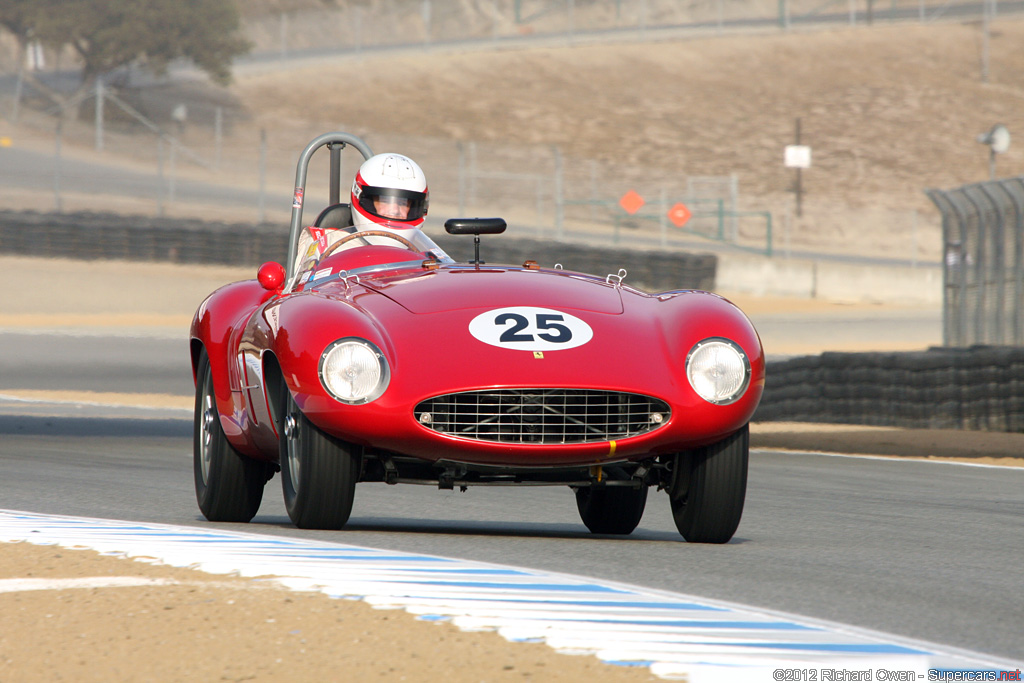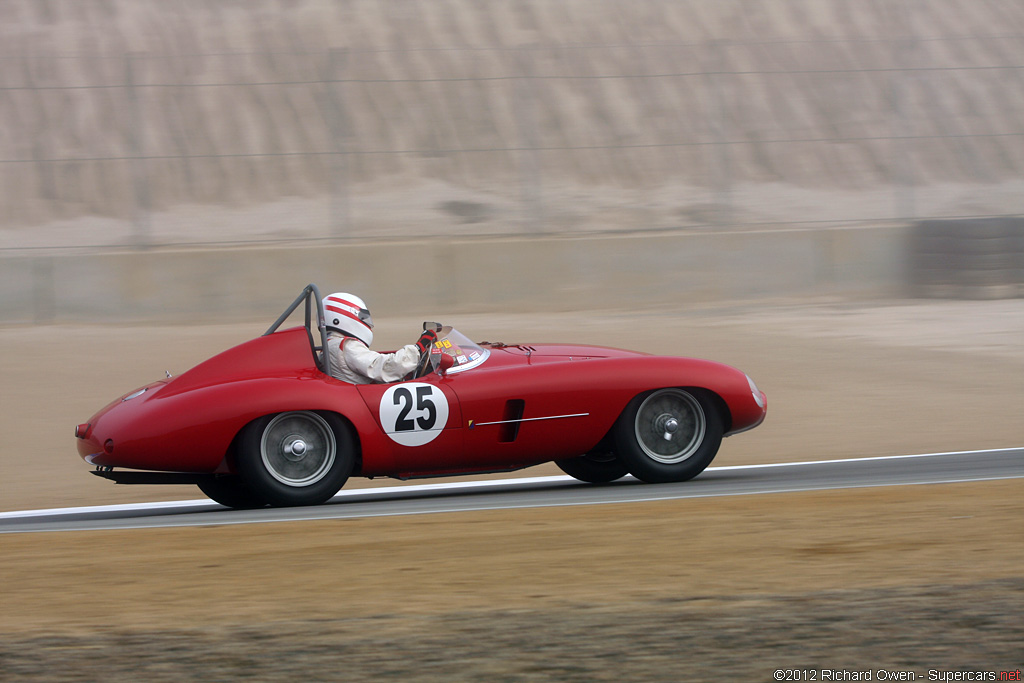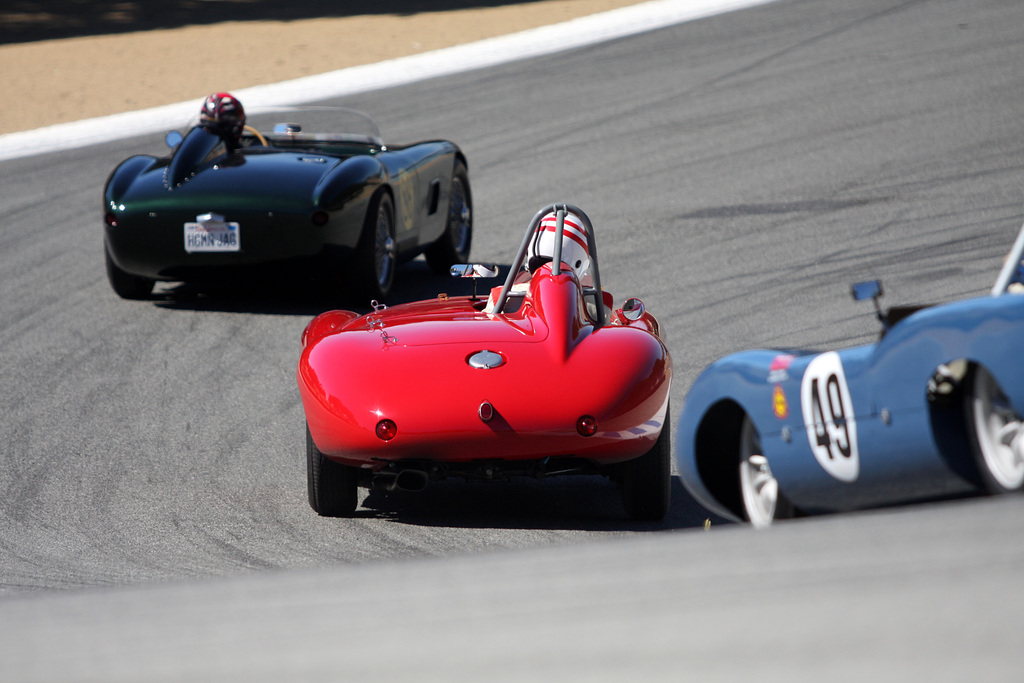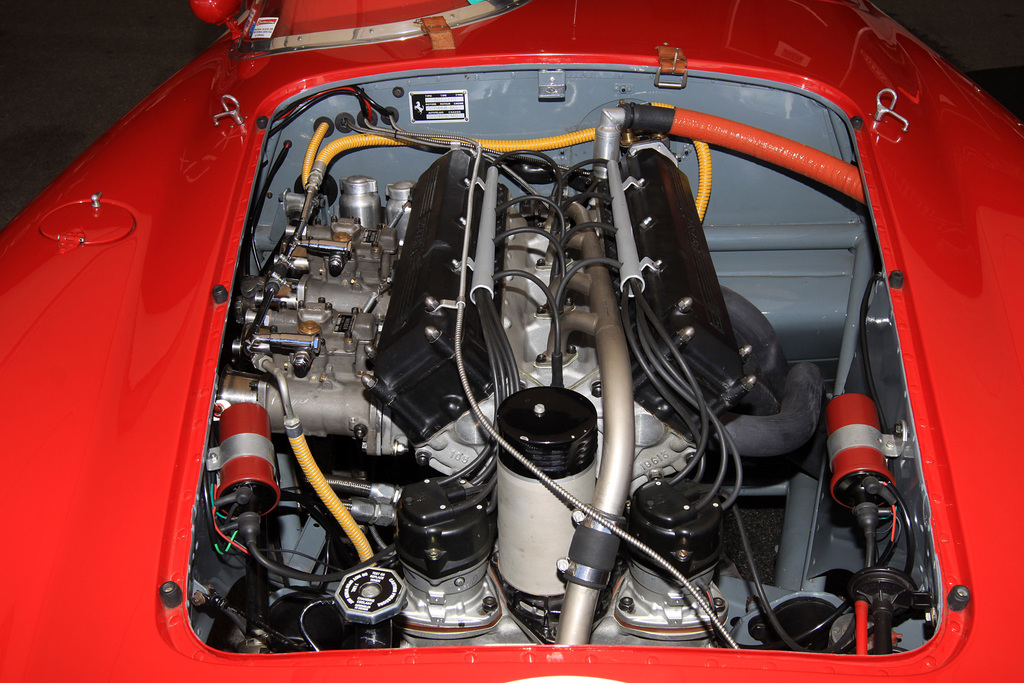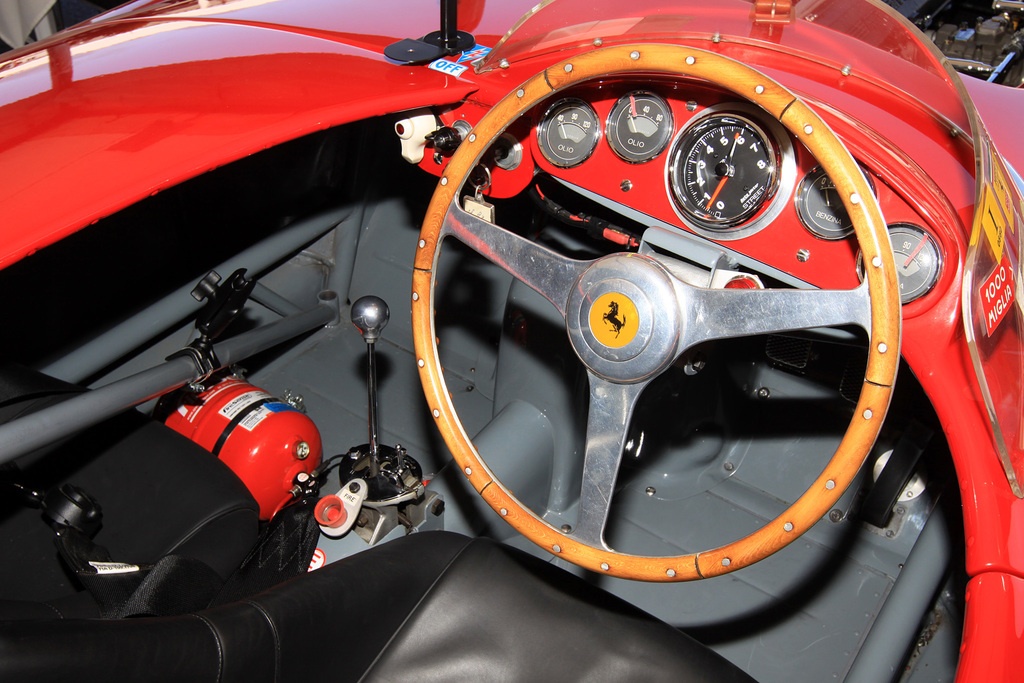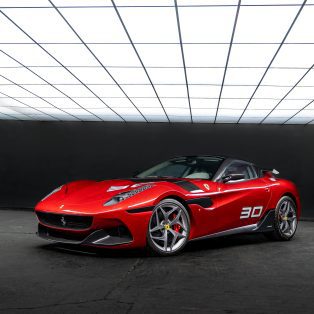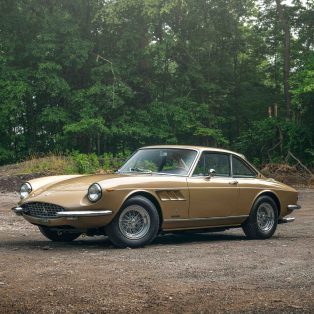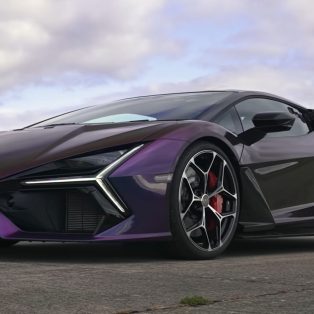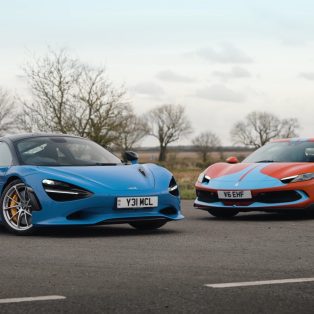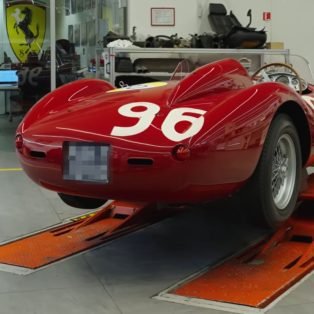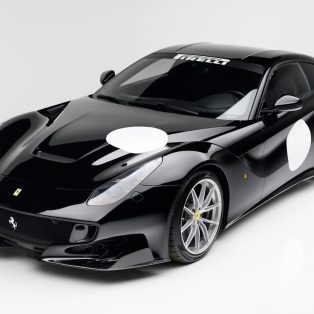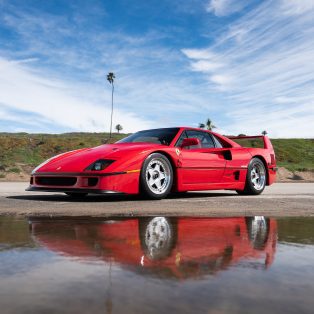Ferrari 500 Mondial Series I (1954-1955 )
Reserved for Ferrari’s private customers, the Mondial was designed for events like the Targa Florio and the Mille Miglia were it could dominate the 2.0 liter class. It was named after Alberto Ascari’s domination in the Formula 2 World Championship and like the single seat race cars, used an four cylinder engine. Alongside factory cars like the 750 Monza, 860 Monza and other V12-powered cars the Mondial wasn’t meant to achieve overall victories, but did score an impressive second place overall at the 1954 Mille Miglia.
Before being used in sports cars, Ferrari’s four cylinder enjoyed success in the World Championship which for 1951 was focused on Formula 2 (F2) regulations. It’s hard to believe Ferrari would ever replace the V12, but after the 1950 season in F1, a four cylinder was on the drawing board. Motivation came from HWMs driven by Stirling Moss that were powered by four-cylinder ALTA engines. The performance of this car and the upcoming 2-liter limit on engine capacity influenced both Enzo Ferrari and designer Aurelio Lampredi to make their own four-banger.
For the 1951 season, Lampredi was given the task to design a 2.0 and 2.5 four cylinder engines that used the same interchangeable parts. He was convinced that the low rpm torque curve would offer an advantage on twisty circuits. After 100 days, the first prototype engine was complete and ready. It had a DOHC, chain-driven valvetrain, 2 Weber 45 DOE carburetors, a light alloy casting and a displacement of 1985cc that could produce 170 bhp. This combination fit so well within the new Formula 2 rules that Ferrari and Alberto Ascari became world champions. That season Alberto Ascari won the Driver’s Championship, winning six of the eight races with the Type 500. Thus, the new car was called the Mondial in tribute to this success.
Encouraged by their World Championship victory, the the first 4-cylinder experimental cars rolled out of Maranello in 1953. These were three 2.5-liter 625 TFs and a 2-liter 735 S. Again another variant was made as a sole 2-liter prototype from a 250 MM chassis. Alberto Ascari and Luigi Villoresi drove this car on December 20, 1953 at the 12 Hours of Casablanca placing second behind the much larger and more powerful 375 MM.
Similar to successful 250 MM prototype, the 500 Mondial used a 2.0-liter engine in a tubular frame having a transmission in the rear combined with a De Dion Type suspension. Up front, the Type 110 inline-4 resembled the 500 Formula 2 engine of 1953. It raced alongside the 750 Monza, essentially a 3-liter version of the same design. Power was driven to the rear wheels with a 4-Speed transmission with optional ratios of 3.92, 4.12, 4.34, 5.06.
Pinin Farina made a striking body for the first examples in the series. Devoid of any ornamentation, the design had a purposeful stance and a neat crease line that stretched from the top of the front wheel well. Unlike the V12 models, the Mondial and subsequent four-cylinder Ferraris lacked good scoops. Two special coupes (0452MD) were also made for the 1954 Tour de France, but neither lasted long enough to reach the finish line (3345 miles). Later in the production series, Scaglietti was commissioned to create a body to Dino Ferrari’s design. These cars used ‘spider’ bodywork with longer, better penetrating bodywork.
The Series I Mondial debuted in 1953 at the 12 Hours of Casablanca in 1953, finishing second behind the 4.5-litre 375 MM. Vittorio Marzotto drove chassis 0404MD to second place overall at the 1954 Mille Miglia. This was a remarkable result since the small Mondial was only running in the 2.0 class, but beat everyone except Alberto Ascari in the potent Lancia D24.
A second series 500 Mondial was produced in 1954/5. These cars all used the Scaglietti ‘spider’ bodywork, but with a new Tipo 111 engine. Furthermore the front suspension was upgraded to include coil springs. Eventually the whole series was replaced by the Testa Rossa (500 TR) in 1956.
Pictures & Gallery
See full 1954 Ferrari 500 Mondial Series I Gallery here
Specs & Performance
| submitted by | Richard Owen |
| type | Racing Car |
| production years | 1954 – 1955 |
| released at | 1953 12 Hours of Casablanca |
| built at | Maranello, Italy |
| coachbuilder | Pinin Farina or Scaglietti |
| engineers | Aurelio Lampredi |
| production | 18 |
| engine | Type 110 Inline-4 |
| position | Front Longitudinal |
| aspiration | Natural |
| block material | Aluminum Alloy |
| valvetrain | Gear-Driven DOHC, 2 Hairpin Valves per Cyl |
| fuel feed | 2 Weber 40 DCOA/3 Carburetors |
| displacement | 1984 cc / 121 in³ |
| bore | 90 mm / 3.5 in |
| stroke | 78 mm / 3.1 in |
| compression | 9.2:1 |
| power | 126.8 kw / 170 bhp @ 7000 rpm |
| specific output | 85.69 bhp per litre |
| bhp/weight | 236.11 bhp per tonne |
| body / frame | Aluminum Panels over Tipo 510 Tubular Steel Chassis |
| driven wheels | RWD |
| wheel type | Borrani Wires |
| front tires | 5.25×16 |
| rear tires | 6.00×16 |
| front brakes | Hydraulic Drums |
| rear brakes | Hydraulic Drums |
| steering | Worm & Wheel |
| f suspension | Double Wishbones w/Transverse Leaf Spring, Houdaille Shocks Absorbers |
| r suspension | De Dion Type w/Transverse Leaf Spring, Houdaille Shocks Absorbers |
| curb weight | 720 kg / 1588 lbs |
| wheelbase | 2248 mm / 88.5 in |
| front track | 1276 mm / 50.2 in |
| rear track | 1276 mm / 50.2 in |
| transmission | Rear Mounted 4-Speed Manual |
| tran clutch | Double Dry Plate |
| top speed | ~250 kph / 155.25 mph |
Auction Sales History
1954 Ferrari 500 Mondial Spider Series I 0418MD – sold for $3,520,000 Offered from the Estate of William H. Tilley. One of four factory Works entrants in the 1954 Mille Miglia. Ferrari Classiche Reb Book certification. Presented and awarded at numerous Concours d’Elegance, including Pebble Beach and the Cavallino Classic. History documented by Ferrari expert Marcel Massini. Auction Source: 2013 Monterey Auction by RM Auctions





